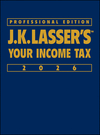Does It Pay to Be Old?

That may be the conclusion you reach when you see the tax breaks limited to those of a certain age:
Medical and dental expenses. While most taxpayers can itemize these costs only if the total exceeds 10% of adjusted gross income (AGI), those age 65 and older can do so with only a 7.5%-of-AGI threshold through 2016. Medical expenses include premiums paid for Medicare Parts B and D, as well as Medigap policies.
The portion of long-term care premiums included as deductible medical expenses increases with age. For 2014, those over age 60 to age 70 can deduct up to $3,720 and those over age 70 can deduct $4,660 (in contrast to the limit of $1,400 for those over 50 but not over 60 years old).
If you have a health savings account (HSA), once you’re 55 years old, you can add $1,000 annually on a tax-deductible basis. However, no contributions can be made to an HSA starting at age 65 (when you become eligible for Medicare).
Additional standard deduction for age. Those who don’t itemize can take an additional standard deduction amount if they are at least 65 years old. The additional amount for 2014: $1,200 if married or a surviving spouse; $1,550 if unmarried (and not a surviving spouse).
Additional retirement plan contributions. In order to maximize retirement savings, you can add more money to your accounts starting at age 50. The additional amounts are called catch-up contributions but are not dependent on whether previous contributions were made; they depend only on age. The additional contribution amounts depend on the type of plan and for 2014 are:
- $5,500 for 401(k) or similar plans
- $2,500 for SIMPLE IRAs
- $1,000 for traditional or Roth IRAs
Estimated tax relief. Usually, if you underpay your estimated taxes, you’re subject to penalties. However, there is special relief for those who retire after age 62 and have reasonable cause for the failure to pay estimated taxes. This relief applies only for 2 years, though.
State income taxes. Your state may offer special age-related tax breaks. For example, in many states, Social Security benefits and pensions are tax free (some limits may apply). There may be tax credits for items such as long-term care premiums. Check with your state tax or revenue department for more details.
Note: There is a tax credit specifically for the elderly (those age 65 and older), but it is so limited that very few taxpayers can quality for it. According to the Winter 2014 IRS Statistics of Income Bulletin, of the more than 144 million federal income tax returns filed for 2012, only 65,000 taxpayers claimed this credit.
Negatives
While there are many favorable tax rules for aging, there are some drawbacks to note:
- Distributions from qualified retirement plans and traditional IRAs must begin at age 70½. (Distributions from qualified retirement plans can be postponed until actual retirement if you continue to work beyond this age.)
- Contributions to traditional IRAs are barred starting in the year in which you reach age 70½.
- Contributions to HSAs are barred starting at age 65.



